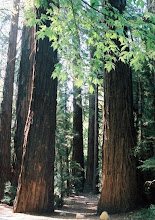I live in one of the few counties left in Minnesota that are considered primarily agricultural - meaning that the majority of people earn their income through agriculture; farming and those things that directly support farming. That means the pace of living around here is directly related to what is happening in the fields and right now that means harvest. And if you live around here, you can't help but be aware that it is a very busy time around the clock.
During the night, I could hear the big semi trucks filled with tons of sugar beets on the road. The dry sunny weather that we are very grateful for has been drying out the fields and so the harvest of sugar beets and soybeans are in full swing. When the weather is too warm to harvest beets, the combines are out in the beans. The air is full of dust and hums with the sound of machinery in the fields and at the elevators. The roads are caked with mud from the fields and rumble with the truck traffic. It is a very different picture of harvest than the romantic notion many people bring to mind.
The pace of harvest is fast to frantic with people trying to get the crops in before the weather either changes the quality of the crop or stops the harvest for snow and rain or in the case of sugar beets, before it gets too warm or too cold to harvest. Because of this people work long and hard hours and can be at the ragged end of tired. Add together these things and the machinery involved and harvest can be a dangerous time.
One of the pictures I carry about harvest from growing up is of a famous painting of the more romantic style. My parents had a framed large print of Jean-Francois Millet's the Angelus which shows a couple bent in prayer over their harvest work in the middle of a potato field. There is a church steeple in the background and the implication understood at the time (19th century) was that the bells at the church had rung calling them to prayer. The church bells were rung before service, at the beginning of worship and also rung in a slow peal to indicate the time in the service when the Lord's prayer was being prayed. This way everyone in the community, even those working in the field could join in prayer.
I often recall this painting as I hear the church bells ring on Sunday, calling us again to prayer; only now most people probably don't know the significance. Perhaps you can consider these words as a call to common prayer for the harvest where ever it is happening around you. Pray for a safe and a bountiful harvest, for just prices, for all those who labor, and for those in need.
In the Old Testament, harvest is mentioned most often as a time to think of and provide for those in need: widows, orphans, and aliens and the beasts and birds of the fields. There are instructions not to harvest every bit but to leave gleanings for the poor and wild animals. It is instruction for people not to be so greedy for themselves but to look out for the needs of others. Harvest is to be a time of plenty for everyone. It is a reminder that God is the one who makes harvest possible not the work of human hands and that the earth does not belong to us for exploitation but has been put into our care for God's purposes. Our truest prayers are accompanied by faithful action. Read Deuteronomy 24:17-22.
Subscribe to:
Post Comments (Atom)


No comments:
Post a Comment